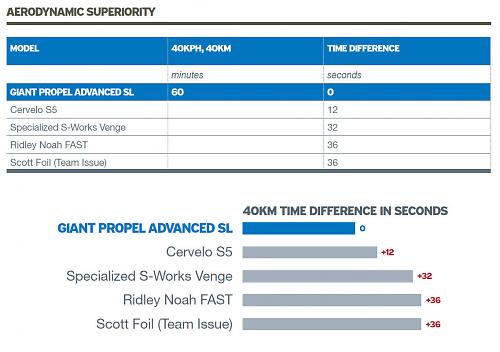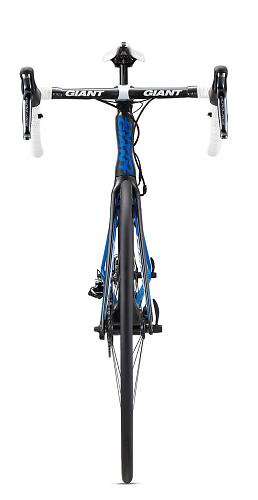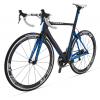- News
- Reviews
- Bikes
- Components
- Bar tape & grips
- Bottom brackets
- Brake & gear cables
- Brake & STI levers
- Brake pads & spares
- Brakes
- Cassettes & freewheels
- Chains
- Chainsets & chainrings
- Derailleurs - front
- Derailleurs - rear
- Forks
- Gear levers & shifters
- Groupsets
- Handlebars & extensions
- Headsets
- Hubs
- Inner tubes
- Pedals
- Quick releases & skewers
- Saddles
- Seatposts
- Stems
- Wheels
- Tyres
- Tubeless valves
- Accessories
- Accessories - misc
- Computer mounts
- Bags
- Bar ends
- Bike bags & cases
- Bottle cages
- Bottles
- Cameras
- Car racks
- Child seats
- Computers
- Glasses
- GPS units
- Helmets
- Lights - front
- Lights - rear
- Lights - sets
- Locks
- Mirrors
- Mudguards
- Racks
- Pumps & CO2 inflators
- Puncture kits
- Reflectives
- Smart watches
- Stands and racks
- Trailers
- Clothing
- Health, fitness and nutrition
- Tools and workshop
- Miscellaneous
- Buyers Guides
- Features
- Forum
- Recommends
- Podcast
TECH NEWS
First look: Giant Propel Advanced SL & Envie aero road bikes +video
Giant has unveiled its first ever aero road bike, the Propel Advanced SL, which is getting a thorough shakedown in the Tour Down Under currently, with Mark Renshaw being spotted on one. It’s claimed to be up to 36 seconds faster than other road bikes over a 40km time trial at 40kph. They reckon it’s faster than every other aero road bike on the market.
The Propel marks the first time Giant has offered an aerodynamic road bike. It’s been some years in development, with Renshaw and Theo Bos involved in the development programme. Giant says the bike has been designed to be as light and stiff as their current flagship road bike, the TCR Advanced SL, but offering the aero advantage that many professional racers demand these days.

Key to the frame is the AeroSystem Shaping technology that is the result of Computational Fluid Dynamics (CFD) research and wind-tunnel tests. Every tube has been carefully shaped, with a teardrop shape in evidence wherever you look. Interestingly, it’s clear the downtube has been shaped with a water bottle in mind. It’s flattened to a degree roughly where the water bottle normally protrudes from the sides of a conventional down tube.
Testing has clearly been key in the development of the bike. As well as Bos, Renshaw and the Team Blanco riders, Giant even developed their own ‘dynamic mannequin’ to test the bike in the ACE wind tunnel at Magny-Cours, France.

The chart above shows how the Propel Advanced SL fared against competitor’s aerodynamic road bikes, up to a yaw angle of 15 degrees. They've tested each bike with the same Giant P-SLR1 wheels, Shimano Dura-Ace 7900 groupsets and standard bars, stems and Fizik Arione saddle.
The results, say the company, is that in head-to-head testing with other brands' aero bikes is that it ‘proved more aerodynamic at every yaw angle tested’. We like a good aero claim here at road.cc, and Giant don’t disappoint. They reckon you'll be 12 to 36 seconds quicker than other aero bikes over 40km, according to Giant's stats.

Giant tested the Propel against a Cervelo S5, Specialized S-Works Venge, Ridley Noah FAST and Scott Foil, and they were fastest in that order. The Propel is 12 seconds faster than the S5 and 36 seconds faster than the Foil, according to their data.
From the photos we have, it’s a good looking bike. Notable is the very level top tube (Giant pioneered the sloping top tube with its compact geometry). Integration is key with aero road bikes - keeping the airflow smooth over the frame and fork forces a rethink with components like the brake calipers. Giant’s SpeedControl SLR carbon composite mini-V brakes are located behind the fork and in the usual location on the seat stays.

The company likes to weigh ‘modules’ (medium frame, uncut steerer tube, seatpost (including head), brake system and headset plug) and the new Propel weighs 1,675g. Remove all those components and we reckon the frame is safely below the 1kg mark. A 7kg or lighter build should be realistic.
There are features carried over from the TCR: the OverDrive 1 1/4-to-1 1/2in tapered head tube with larger top bearing diameter, the PowerCore 88mm wide PressFit bottom bracket and a Duotap-esque RideSense wireless speed sensor incorporated into the non-driveside chainstay. Geometry is also carried over from the TCR, making it easy to swap between bikes.

As well as the frame and fork, Giant also develop an aero handlebar and stem, the all-new Contact SLR Aero Integrated handlebar and stem unit. This is said to improve aerodynamics further.

Theo Bos (above) seems impressed with the Propel: “It’s been almost a year since I started testing pre-production versions of the Propel Advanced SL. The first time I rode it I knew this was a bike that would give me an advantage in sprint situations where every fraction of a second counts.”
At launch Giant will only offer the Propel Advanced SL 3, which will cost £4,499. That gets you a frame built with a Shimano Ultegra groupset with a 53/39 chainset and 11-25 cassette. Wheels are Giant's own P-SLR1 Aero WheelSystem with P-SLR1 23mm front and rear specific tyres. Giant supply their own SLR Aero handlebar and stem, and the saddle is a Fizik Arione Kium R3.
Envie for women
Since we published this story, we've had news of the Envie Advanced 2, a version of the Propel specically designed for women. It was developed with World Champion Marianne Vos and designed for serious road.

Differences include dedicated geometry. A shorter top tube and taller head tube are the key differences to the frame, along with a carbon fibre layup that has been customised.
The Envie Advanced 2 costs £2,199 and includes a Shimano 105 groupset, Giant P-SL1 WheelSystem, Fi'zi:k Donna saddle and Giant Connect SL women's handlebars and Contact stem. Three sizes will be available, xs, s and m.
Propel video
David worked on the road.cc tech team from 2012-2020. Previously he was editor of Bikemagic.com and before that staff writer at RCUK. He's a seasoned cyclist of all disciplines, from road to mountain biking, touring to cyclo-cross, he only wishes he had time to ride them all. He's mildly competitive, though he'll never admit it, and is a frequent road racer but is too lazy to do really well. He currently resides in the Cotswolds, and you can now find him over on his own YouTube channel David Arthur - Just Ride Bikes.
Latest Comments
- IanGlasgow 2 sec ago
"near his home in Monaco" Yet another cyclist who doesn't pay any tax
- Rendel Harris 29 min 38 sec ago
But we could have ANPR cameras automatically issuing sanctions to vehicles over a certain width who ignore posted restrictions, no physical...
- Tom_77 1 hour 49 min ago
The SaddlePod looks nice, but if you're in the UK by the time you've paid shipping ($31) and import duty (who knows where we'll be with that come...
- TheBillder 1 hour 52 min ago
I've had (past tense is deliberate) 3 of these over the past 5 years. I'm back here researching for a replacement as my last one broke last week. I...
- chrisonabike 3 hours 54 min ago
And the next time - plead sympathy for your addiction, caused by trauma from your previous "accident"...
- wtjs 3 hours 57 min ago
Butyric Acid... was the most disgusting thing I have ever smelt in the lab...
- ubercurmudgeon 4 hours 28 min ago
Even a stopped clock, etc, etc...
- Bigtwin 5 hours 49 min ago
I wouldn't be meeting that Orange Pillock anywhere, let alone 1/2 way.










Add new comment
25 comments
I love this whole aero malarkey.. Because the customer on the shop floor has no way to tell which bike actually IS the most aero whereas they would be able to tell which is the lightest
I think that considering how many people get all concerned about their bike's weight, aero is really under appreciated.
Just in, the Propel Advanced SL 3 will cost £4,499. Seems like Giant only offering one bike (in the UK at least) for starters
Plus, they've told us a women's version, the Envie, has been developed too. The first women's specific aero road bike?
David, whats the spec changes for that version? Mainly, what are the wheels on it please?
Its a cracking looking bike, first big problem for me is I always fall between Giants somewhat limited sizing and 2, my guess is the price will be more than I have to spend.
Aero on a road bike is so subjective. The human body creates 7 times the drag of the bike (apparently). Thus for us average riders, or even a pro rider, if you change your position once in 40km, or draft anyone, or any other normal change of position etc my guess is this is all baloney. That said, if you are 25 miles out and attack, this could be your huckleberry, just dont sit up! Id like one though, noice boik
A 2013 Giant TCR Advanced SL 0 with electronic DA is £6999, cant see this being any cheaper
Would there be a link to those wind tunnel protocols MinardiM189 cos it'd be useful to have?
Do a search for wind tunnel blockage effects.
In general it is considered bad practice to have a frontal area of the test object that is 10% or more of the wind tunnel working section area. As the test object is yawed the frontal area increases and makes things worse.
This originated in aerospace testing where test objects are reasonably aerodynamic and have a small 'wake'. With less aerodynamic objects the 'wake' is larger and in some cases can have an area greater than the test object. In these cases the cross sectional area of the wake should be considered. Bicycles probably fall into this latter category.
An F1 car has a huge wake mainly from the rear wing, this can be up to 10 times the height of the car (vertically). So the blockage effect is much greater.
Many bicycles are tested in F1 wind tunnels or varying size, I believe the McLaren & Mercedes F1 wind tunnels have been used for aero testing of bikes. These are much larger (and of a different design) than the 'old' Ligier/Prost tunnel used by Giant. Results from these tunnels would be more believable.
Attached is a pic of another bicycle in the Magny Cours tunnel. With a rider on the bike would this give realistic results?
canyon bike in Magny Cours wind tunnel.jpg
No word on pricing yet, as soon as we know we'll update the article and let you know
Nice looker for a big brand bike.
What's the prices, on these chaps? I'd guess the one above is 7k?
It's a good looking machine regardless...any idea on price?
Another manufacturer testing in a wind tunnel which is too small.
More meaningless aero figures.
Everyone's figures say their own bike is the most aerodynamically efficient. There's no such thing as a standard aero testing protocol. Everyone tests in different ways and says that their protocol is the most realistic – and, invariably, their product rates best according to their system of measurement. Hence, lots of numbers that mean very little.
There are also basic rules for what size wind tunnel should be used for testing to give believable results. I believe the ex Ligier/Prost F1 wind tunnel at Magny Cours is too small for a full size bike/rider combination.
Amongst other things this will change the size of the wake & the rider's wake influences the whole flow around the frame. The situation will become even worse when they test at yaw, the whole flow field around the bike/rider will be distorted.
In this case I believe the results of any tests will be pretty much meaningless.
That's the point, MinardiM189. There aren't any agreed rules. Giant clearly think their test results are valid.
They say, "Eschewing current industry testing standards, which typically utilize either static dummies or human riders to measure aerodynamic performance of rider and bike, Giant developed a dynamic mannequin for its wind-tunnel development sessions at the ACE wind tunnel in Magny-Cours, France. Unlike a static mannequin, a dynamic mannequin accurately replicates the aerodynamic effects of a cyclist pedaling a bicycle."
Other designers/engineers will doubtless disagree with Giant's protocol. There are no standard rules to which everyone has signed up, so everyone will continue to publish their own figures which demonstrate that their product is undoubtedly more aerodynamically efficient than everyone else's.
There are standard rules for wind tunnels testing accepted across aerospace and automotive sectors.
The fact that Giant and some other bicycle manufactures don't follow these shows a fundamental lack of aerodynamic training. Or they are testing purely for marketing reasons.
To get any meaningful results (particularly at yaw) they need to use a bigger wind tunnel.
It isn't about any protocols it is about the basics of wind tunnel testing.
I think it's purely for marketing point - sure some might be genuinely more aero than others but on the whole it's hard to trust anyone. It's funny that drag coefficients of cars are not told in the same way.
Besides, and here is a shocker, wind tunnels are just about useless for reliably establishing real world aerodynamic performance of small structures traveling at low speeds due to the very low ratio of forward motion versus incident wind speeds. In other words, air around us is not a perfectly laminar, stable, uniform density mass as in a wind tunnel, but a swirling random mess. At car or airplane speeds, this does not matter much as the forward motion vector is orders of magnitude higher than any local vectors, but at bike speeds it matters a great deal...I'd like to see field testing become the norm for establishing aerodynamic superiority of bikes.
Lastly, Giant admitted that the setup of their bike was different to the setup of other bikes, thus how they can then combine the data and present their bike as being superior is beyond me.
I wonder when bike brands will start suing each other for misrepresentation with intent to cause commercial damage to competitors...
Field testing is extremely difficult to do accurately and far more expensive than wind tunnel testing.
Wind tunnel testing can be done accurately, even for a bicycle.
What Giant says is that in riding the Propel you can expect to be 12 to 36 seconds AHEAD of other aero bikes
So if it takes 60 minutes to cover the 40km time trial on their Propel, the other aero bikes are going to be between 12 and 36 seconds slower and behind the Propel. Make sense?
Problem with aero claims, is there is no real standard of measurement. Time saved over a 40km TT is emerging as one, but as Giant shows, they don't all really follow it
Remember to factor in who's riding the bike. Horses for courses.
I'm sure Matthew knows exactly what Giant's spin doctors mean. He's just pointing out that what they actually said makes no sense.
If you're riding at 40kph for 60 minutes then it doesn't matter if you're riding a Propel, a Venge or your kid's tricycle - 40km will take exactly 3600 seconds. Not one second more or less.
Well this manages to make absolutely no mathematical sense: "So, if you’re riding at 40kph (25mph) for an hour, you can expect to be 12 to 36 seconds ahead of other aero bikes, according to Giant's stats."
If you're riding at 25mph for an hour you can expect to have done 25 miles in an hour. Saving 12 to 36 seconds is by definition impossible.
Only makes sense if we're talking in terms of time taken to ride 25miles, where the Giant's baseline time is 60minutes - in which case none of the other bikes are going at 25mph for an hour...
Yeah, Giant say, "At a speed of 40 kilometers per hour over a distance of 40 kilometers, the Propel Advanced SL was 12 to 36 seconds faster than the other bikes tested."
Presumably, they mean that if you go 40kph for an hour on the Propel, at the same power output you'd cover the 40km 12-36secs slower on the other bikes tested.
That would be my interpretation.
Are road bikes going to split off into 2 separate categories? Aero/speed vs. Disks/all day comfort? Looks like it.... can't see pro's using disks anytime soon, they are all talking about aero more and more, marginal gains etc.